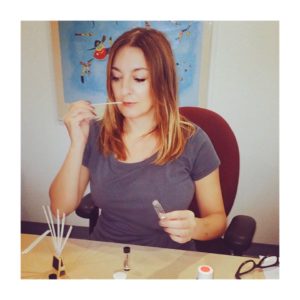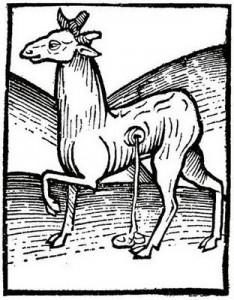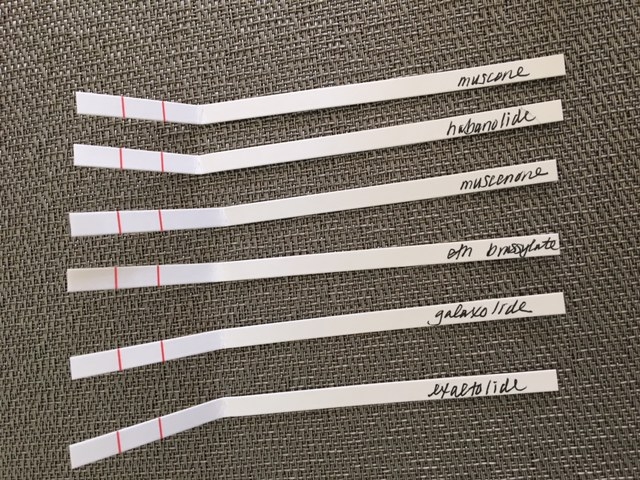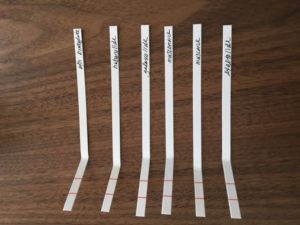
Sherri Sebastian, Perfumer
While natural musk has essentially disappeared from the perfumer’s palette, the effect it has on our collective consciousness lives on through an array of synthetic substitutes. When I started working as an apprentice in the industry—first flavors then fragrances—perfumery, like a medieval guild, was passed on through generations, learned by diligently working under the tutelage of a master. As I patiently awaited further instructions to advance my training, I observed the subtle interplay between ingredients. When I began noticing animal-derived products like civet, castoreum, ambergris and musk disappearing from the lab, I didn’t ask questions.

Musk Deer via Wikipedia
It’s admirable that the industry championed the progressive and responsible use of ingredients. As a perfumer, I appreciate my historical knowledge of musk. But as an animal lover, the removal of animal-derived products was a welcome move. Today there are over a dozen synthetic musks that smell nothing like the original musk I briefly remember drawing into my pipette.

With 24 years of experience and over 30 thousand formulas under my belt, I have an appreciation of the importance of musk today. They can dominate, or take a subtle back seat. They also have the ability to push top notes. For instance, someone might say, ‘This is the best citrus scent!’ not realizing that it’s a precisely chosen musk, added at an exact percentage that enhances the citrus characteristic. A deeper dive into synthetic musks reveals how unique they can be.

Galaxolide and ethylene brassylate are in my opinion the most versatile and unifying.
Muscone and Muscenone are precious, concentrated, and at times powdery. A touch will boost a woody accord and add depth. Too much will flatten out the very elements you’re trying to enhance.
Musk xylol, banned by IFRA, is a chalky and substantive note that’s not easily replaced, which is why some vintage scents are truly no longer available.
Habanolide (decidedly more masculine in my opinion), and exaltolide are excellent everyday musks—warm, soft, and creamy. They can have synergistic effects with other ingredients, depending on the formulation.

Naomi Campbell by Herb Ritts 1991
There are many more, but this brief overview gives you an idea of how one note has given rise to an array of possibilities.If you find yourself asking, ‘what is this?” you may be experiencing the invisible—and sometimes inexplicable—allure of musk. My advice is to let go of knowing, and simply sink into the sensual experience of things that are not easily explained.
-Sherri Sebastian, Monthly Contributor
Sherri Sebastian is a professional and independent perfumer working in Los Angeles. She also holds a seat on the board of directors for the American Society of Perfumers. Her new line of apothecary and fine fragrances, Provision, is the result of her never-ending quest to provide the ultimate fragrance experience, in a variety of mediums. www.provisionscents.com
